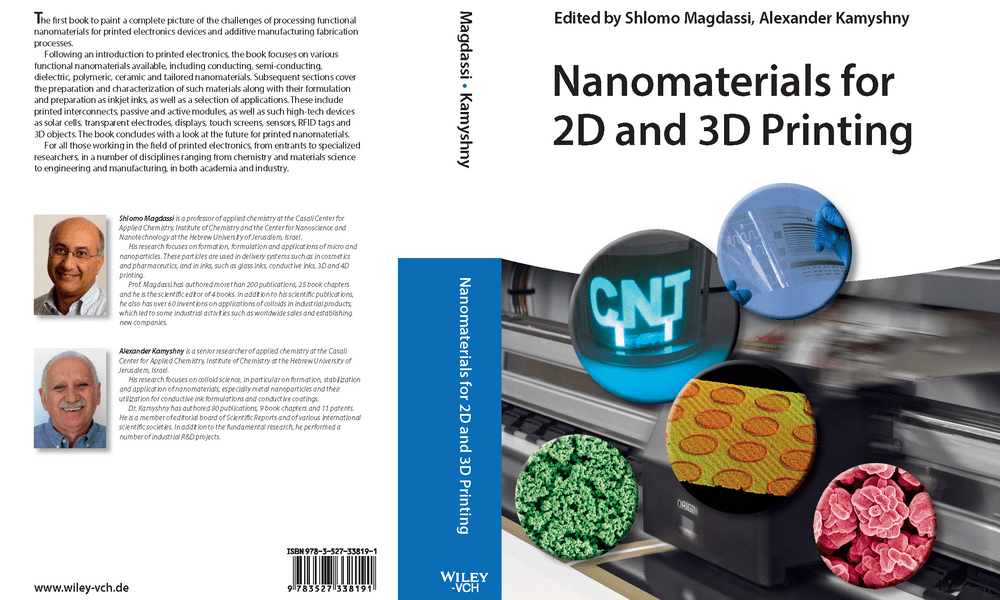The topic of inkjet printing has seen a strong growth over the last decade, as it represents a new and versatile tool for depositing a wide variety of functional materials in an additive, digital and non-contact manner. In particular, inkjet printing of functional materials is increasingly used by researchers as a valuable tool for micromanufacturing and rapid prototyping.
Nanomaterial dispersions, such as nanoparticles and nanowires, in a suitable solvent have been frequently studied for their usage as ink in printers with their resulting application in printed electronics. The synthesis, the characterization and the resulting functional properties of nanomaterials demands an understanding in various disciplines, including chemistry, physics and materials science. The topic of inkjet printed functional nanomaterials is rapidly growing in the scientific research community and is now moving ahead to the printing industry with a rising number of emerging applications, including 2D and 3D printing.
The book “Nanomaterials for 2D and 3D Printing” is edited by Prof. Shlomo Magdassi and Dr. Alexander Kamyshny, both of them have spent many years in the field of formation, formulation and applications of micro- and nanoparticles. synthesis and inkjet printing. These particles are used in delivery systems such as in cosmetics and pharmaceutics, and in inks, such as glass inks, conductive inks, 3D and 4D printing. Both editors form an authority in the field of inkjet printing, proven by their long list of journal publications, book chapters and number of inventions. Each of the book chapters are written by peers in the field of printed electronics and 3D printing. To name a few in alphabetic order: Dr. Robert Abbel (TNO, Eindhoven, the Netherlands), Prof. Ghassan Jabbour (University of Ottawa, Canada), Prof. Pooi S. Lee (Nanyang Technological University, Singapore), Prof. Jooho Moon (Yonsei University, Seoul, South Korea) and Dr. Patrick J. Smith (Sheffield University, UK).
This book paints in a unique manner a complete picture of nanomaterials used for printed electronics applications. After an introduction to printed electronics, the focus is on various functional nanomaterials for printing, including conducting, semi-conducting, dielectric, polymeric, ceramic and tailored nanomaterials. The preparation and characterization of such materials is discussed along their formulation and preparation as inkjet inks, followed by a selection of applications for printing. The applications include printed interconnects, passive and active modules, as well as specific applications such as transparent electrodes, displays, touch screens, sensors, smart windows and radio frequency identification (RFID) tags.
In conclusion, the book presents a great overview of the field on the topic of nanomaterials for 2D and 3D printing, moving from fundamental aspects of synthesis and printing to their (future) applications. This book is a MUST for all those working in the field of printed electronics, from entrants to specialized researchers, in a number of disciplines ranging from chemistry and materials science to engineering and manufacturing, in both academia and industry!

















